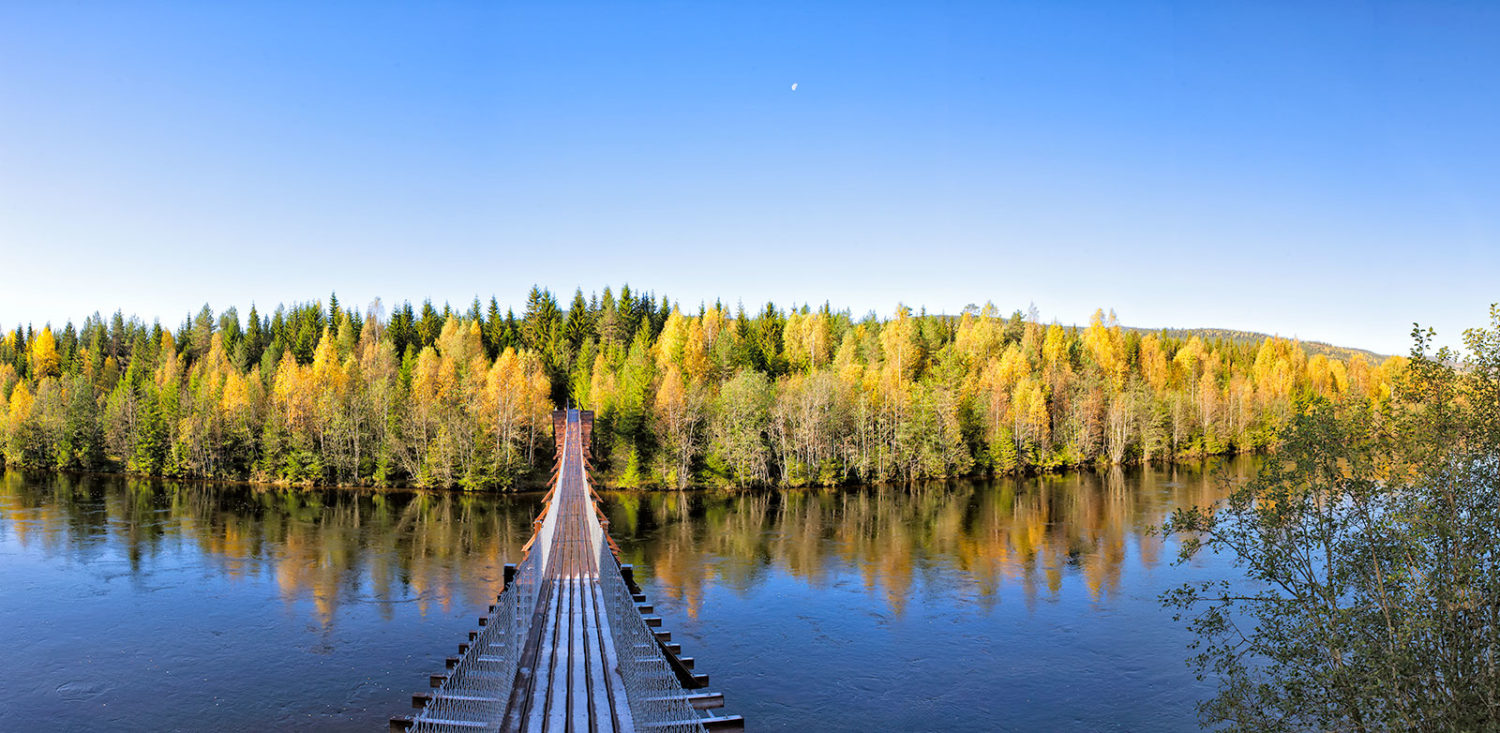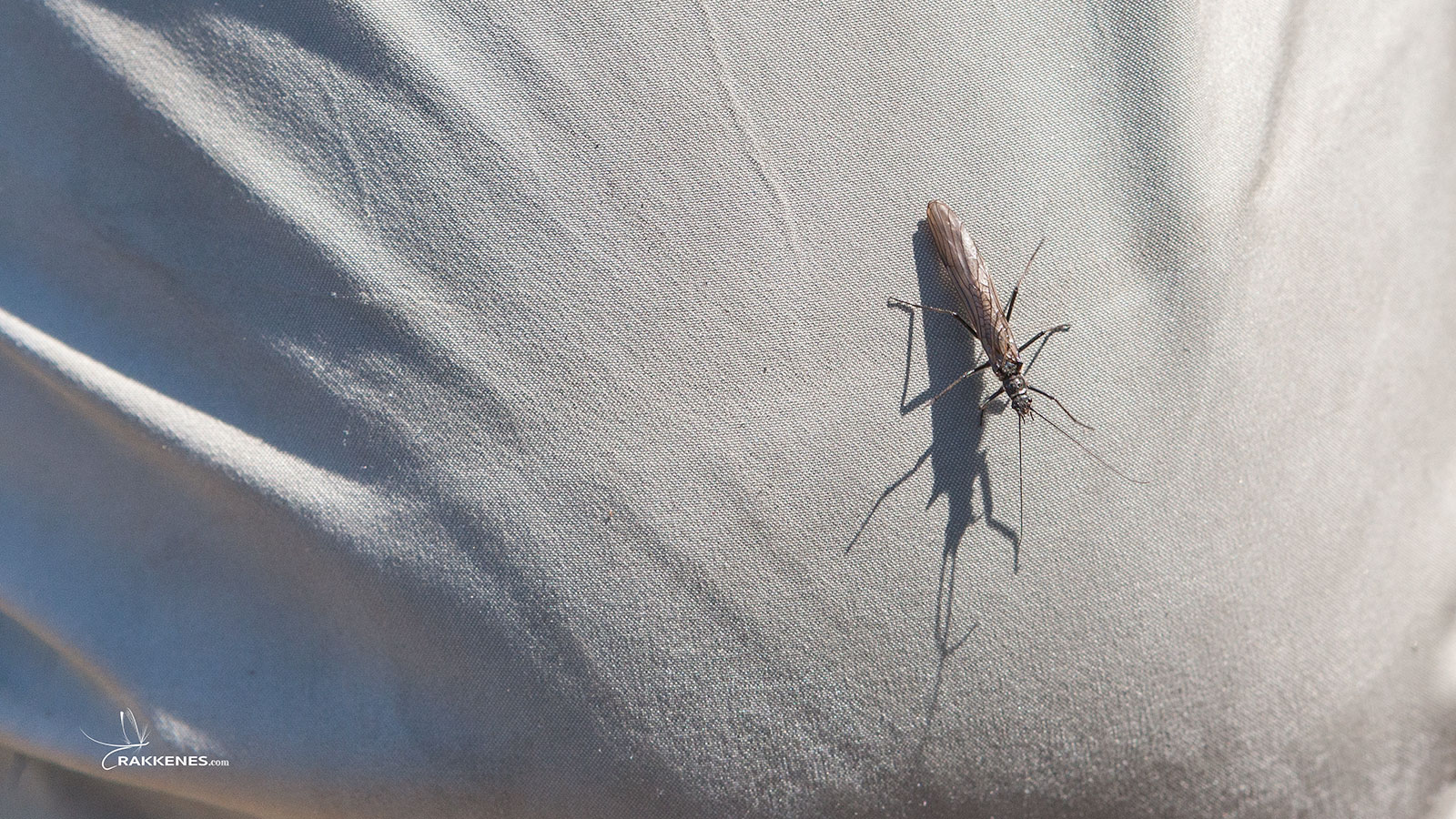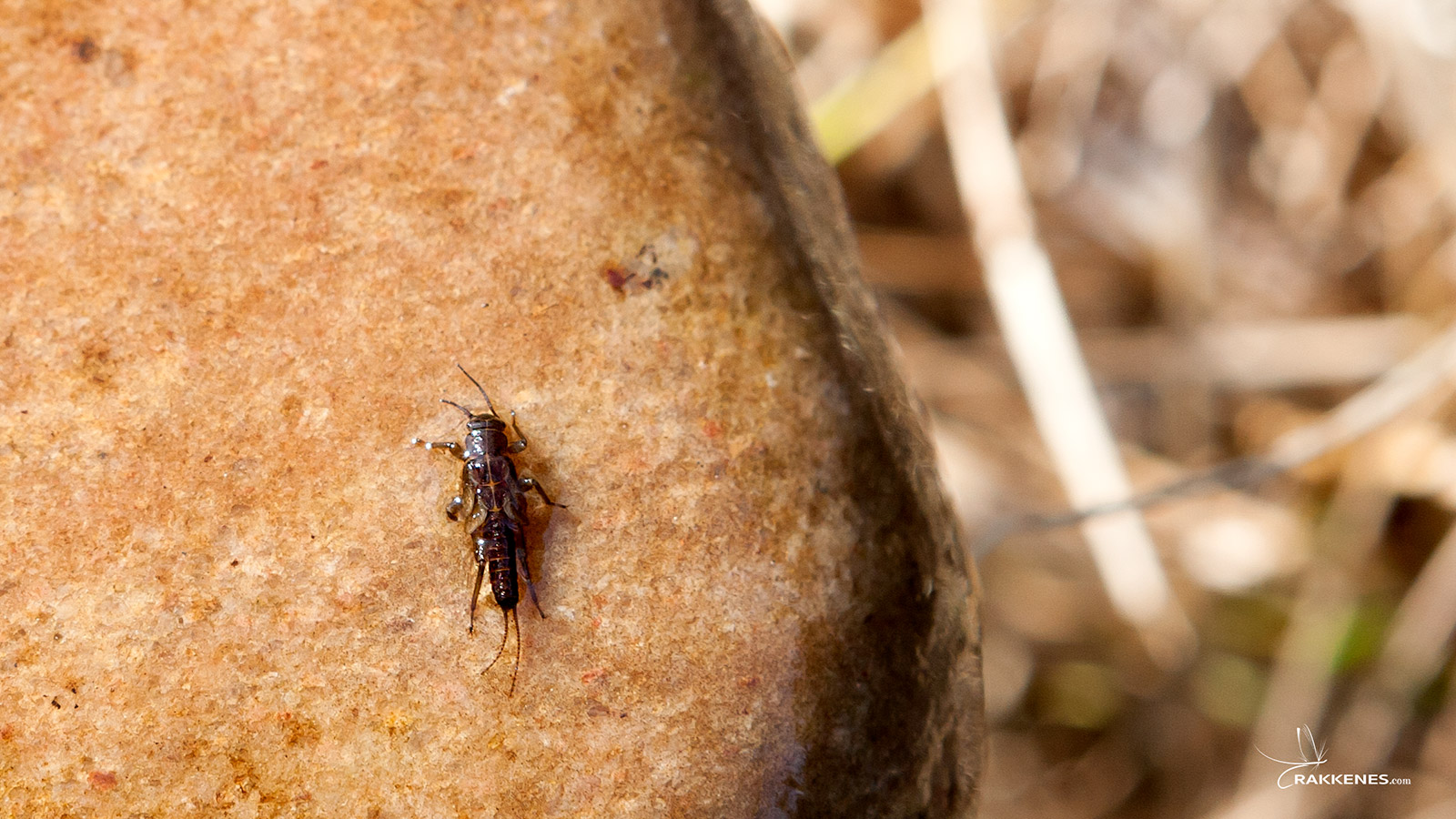It’s something about fall. Crystal clear waters, razor sharp air, morning frost and a symphony in colors are nature’s last serving before the kitchen bell rings, and the season close.
For well-fed anglers, fall is the dessert after a hectic season. Five months of misses and takes, successes and failures, rain and shine makes a season in Norway.
For all practical reasons, the season is over in early September.
However, before it all ends, there one more item on the menu for the persistent fly fisher. On the sunny rivers bathing in the reflections from golden fall leaves, the stoneflies battle for attention with the second generation may fly hatches. Only this time, the slender stonefly is the star of the show.
Although the large stoneflies in spring and summer are more spectacular in size and behavior, they are not very interesting for dry fly fishing. You simply ignore the early generations of stoneflies, or go for the nymph. The slender Needle Fly that appear in the fall however, can offer one of the best dry fly experiences of the season.
The Twiggy of the water insects
The Needle Fly is in the Leuctridae family. According to the Norwegian fly fishing pioneer, Pål Krogvold, the only family in Norway is the Leuctra with four variations in species. But the small family is no show stopper. The Leuctras can turn on a party all by itself. Literature point that they hatch throughout the season (June – October). My daybook notes however indicate that the most efficient imitation periods for the Needle Fly is in fall. Late in the season they can appear in numbers, if you’re lucky. Outnumbering other hatching insects in the river.
Compared to their larger stonefly brothers and sisters they are the Twiggy’s among the water insects, thus their nic “The Needle Fly”. The Lectruidae is a slender rascal, with a black body and slightly lighter legs. The insect has two dark dun colored wings lying flat on top of the body. It really looks as they only have one wing when they’re resting. With a body size ranging from 9 millimeters down to 4 millimeters, they are easy to oversee when evaluating the hatch.
Like their relatives, the Needle Fly thrive in running water with a stony river bed. They do not hatch in the water. The nymphs crawl up on stones, vegetation and even far into the river banks to hatch. Therefore, they are not interesting to imitate as emergers. You simply go for the nymph, a dry imitation of a resting or an egg laying stonefly. I prefer to fish them in one of the latter two variants.
Easy to bet on the wrong horse
If you’re lucky you’ll encounter hordes of the Needle Fly in fall, just as I did few days ago. Being out on the Rena River in Norway on a magnificent October day, I ran into a hatch of the Ephemerella Ignita (size 14-16, the Blue Winged Olive – BWO) and a tiny Baetis (size 16-18) species that I wasn’t able specify. The BWO (Ignita) hatch was ok, the Baetis hatch was great but both of them were outnumbered by the Needle Fly.

The suspension bridge at Rena River in October. The golden leafs of the birch trees adds is an unmistakeable sign of fall.
For some reason I always start exploring such hatches with a BWO emerger on the tippet. It’s stupid, and I know it. Having walked rivers for decades, I know I should pick up the stonefly box from my backpack. But the beauty of a good BWO and Baetis hatch is too tempting. My romantic instinct kills my rational behavior. I simply have to try my mayfly emergers and duns, before giving up and tying on the Needle Fly.
Beware of the concealed hatch
What’s happening in the river is what Dough Swisher and Carl Richards first named ‘a concealed hatch’. This is a situation when several insect species are on the river at the same time. The fly fisher automatically assumes that the fish rise to the largest of the insects, but very often they don’t. In a typical fall episode like this, when the Ignita and the Baetis are outnumbered by the slender Needle Fly, fish turn selective and choose to go the resting or egg laying stonefly.
This was also what happened that day in Rena. For an hour or so I pretty much tried every Dick and Harry in my Ignita and Baetis boxes, but soon realized that my love for the mayflies also makes me blind.
Stupid as I usually am in these situations.
So watch out for these nice little bugs if you’re fishing in fall. Try your BWO’s but as frustration kicks in, look for the needle bugs on the water and dig out your stonefly imitations from your hip-pack.
The hatch is matched.
In search of fly tying patterns for the Needle Fly? An article and descriptions on how to tie effective patterns will be published shortly.





Leave a Reply
Want to join the discussion?Feel free to contribute!